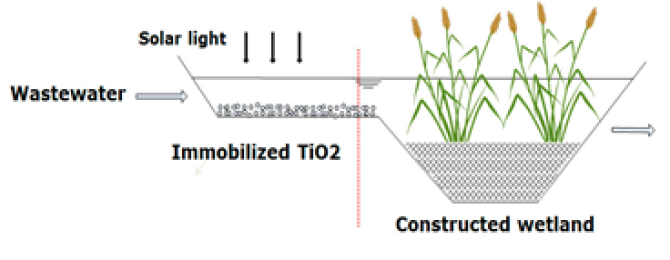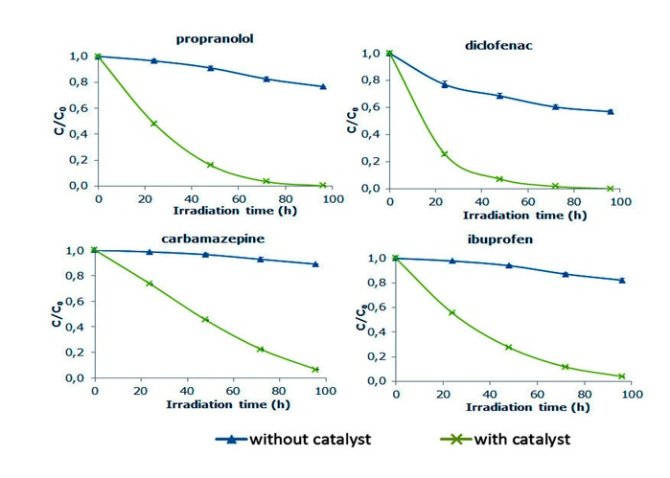
News
Drug residue removal from wastewater
The use of pharmaceuticals, such as the painkillers ibuprofen, diclofenac and naproxen, but also beta blockers like propranolol and metoprolol, pose an increasing threat to our environment. Most of these compounds are actually only partly taken up by the body, the rest is excreted in urine.
Consequently, many of these drugs subsequently end up in wastewater. For example, in The Netherlands, from 34 pharmaceuticals investigated, about half ended up in sewage and surface water in relatively high concentrations: from ng/l to several ug/l. However, wastewater plants are not designed for the removal of these substances; roughly, for more persistent pharmaceuticals, less than one third can be removed. The rest is released into surface waters. Due to their persistency, they may accumulate through the food chain, affecting animals at the top of the food chain. ‘Many pharmaceuticals may interfere with reproduction in vertebrates’, Yujie explains. ‘For example, exposure of fish to 0.001–10 mg/L of diclofenac has been shown to a significant decrease in hatching success.
Constructed wetlands
Photo-degradation, where UV in solar light breaks down these compounds into smaller break-down products (metabolites), has been shown to be rather effective to remove pharmaceuticals from wastewater. However, the efficiency of this method could be improved. In addition, the metabolites might be more toxic than the parent pharmaceuticals. Her research therefore aims to increase photo-degradation efficiency and combine this method with a second degradation step to breakdown the metabolites: constructed wetlands. These man-made wetlands consist of plants growing in substrate containing a lot of microorganisms. Waste water containing pharmaceuticals and their metabolites are directed into these wetlands after pre-treatment using sunlight (fig.1). The drugs are consequently absorbed to the substrate while micro-organisms further degrade these chemicals.

Effective catalyst
Yujie started her research by improving the photo-degradation pre-treatment step. ‘I added titanium dioxide as a catalyst, so the residues are broken down more quickly and completely’, she explains. ‘To make sure the titanium dioxide doesn’t end up in the water, I attached it to the sand in the substrate so it was immobilized.’ The immobilized titanium dioxide proved to be a very effective catalyst. Within 3 days of treatment, beta-blocker propranolol and painkiller diclofenac were removed completely (Fig. 2). Other components, like carbamazepine and ibuprofen were more resistant towards photo-degradation, but were still reduced for about 93 % within 4 days (Fig. 2).

Valuable addition
To break-down the remaining pharmaceuticals and their metabolites resulting from photo-degradation, Yujie is now performing experiments where she uses constructed wetlands to study the potential of pharmaceutical breakdown by several pathways in wetlands, including photo-degradation, plant uptake, adsorption and biodegradation. The first results show large variation in persistence of pharmaceuticals that was also dependent on whether aerobic or anaerobic conditions were used in biodegradation. According to her, this second step could be a valuable addition to wastewater plants to improve the capacity for the removal of drug residues. But the scientist is also determined to clarify the key pathways inside the constructed wetlands.
'Currently, constructed wetlands are still a black box and we have very limited knowledge of the processes taking place’, she says. ‘When we know more about the mechanisms of processes taking place, we can better control these processes resulting in a more efficient residue removal.'